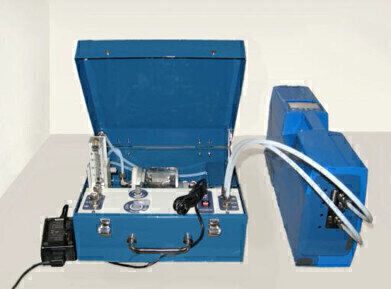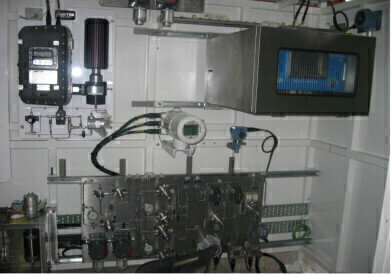Gas Detection
Enjoy flexibility of mercury detection in natural gas
Sep 15 2014
Natural gas, like all other fossil fuels and raw materials, contains mercury that will eventually be released into the environment. The typical mercury concentration in natural hydrocarbon gas may vary from 0.001 to hundreds and even thousands μg/m3. In addition to the obvious ecological issues, the elevated mercury concentration in hydrocarbon gas initiates corrosion of pipelines and catalyst poisoning during gas transportation and processing. These effects have serious implications for the gas-processing industry. Extraction of mercury and purification of gases, as well as the processing of products from gas deposits, both of which involve mercury separating as a fairly toxic element, are very important.
The use of RA-915 mercury analysers with Zeeman background correction of non-selective absorption provides direct real-time mercury measurement in natural gas in a wide range from ng/m3 background level.
The use of the Zeeman background correction and a multipath analytical cell provides high selectivity and sensitivity of measurements, essentially reducing the effect of interfering compounds. Thus, for example, even with 25% H2S content in the gas (whose non-selective absorption amounts to 93%) the detection limit does not exceed 0.5 μg/ m3.
As a result, the analysers provide direct determination of mercury in a hydrocarbon gas due to the elimination of preliminary precipitation and collection of mercury in absorption traps. Analyses can therefore be carried out with a very low detection limit (as low as 0.01 μg/ m3) in real time. The technology provides speed and reliability for field, laboratory and on-line measurement.
To perform a real-time field measurement, the analyzer is set near a gas well or other sampling point (gas pipeline, separator, etc.). The gas flows continuously with a rate of 4-10 l/min through the analytical cell. The blank signal is regularly checked by passing the gas through a special filter that effectively absorbs mercury. The mercury concentration is measured continuously, once per second and can be stored on a datalogger or processed by a computer with a simultaneous data display.
If it is impossible to carry out direct analysis near a sampling point, the gas can be analysed in a laboratory from cylinders or Tedlar® gas sampling bags. An option of analysis of mercury traps (e.g. gold or liquid) is also available with coupling the RA-915M with appropriate attachments in accordance with the ISO and ASTM methods.
Direct on-line mercury measurement in gas flow is provided by the fully-automated RA-915 AMNG monitor, which covers the entire range of mercury concentrations in raw and processed hydrocarbon gases. The system provides tools for long-term measurement with very low maintenance and costs.
For more information, please visit our website or contact us via email
Digital Edition
IET 34.2 March 2024
April 2024
Gas Detection - Biogas batch fermentation system for laboratory use with automatic gas analysis in real time Water/Wastewater - Upcycling sensors for sustainable nature management - Prist...
View all digital editions
Events
Apr 22 2024 Hannover, Germany
Apr 22 2024 Marrakech, Morroco
Apr 23 2024 Kuala Lumpur, Malaysia
Apr 23 2024 Kintex, South Korea
Apr 23 2024 Edmonton, AB, Canada



















